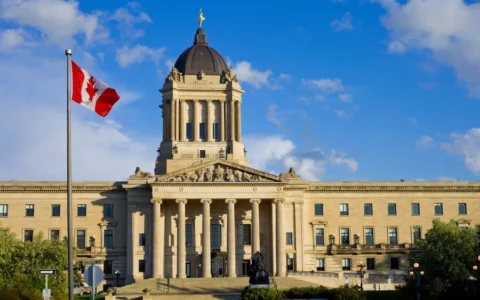Is the U.S. Still Open for Tourism?
International tourism to the United States is struggling, and it’s not solely due to political factors. New visa-related fees introduced in a federal bill are raising alarm across the travel and hospitality sectors. Since President Donald Trump’s return to office, foreign travel to the U.S. has declined. Increasingly strict entry policies and a less welcoming image are pushing travelers toward other destinations. The World Travel & Tourism Council reports that the U.S. is the only country among 184 expected to see a decline in visitor spending in 2025.
What’s the New Visa “Integrity Fee”?
The recently signed ‘Big Beautiful Bill’ includes a mandatory $250 ‘visa integrity fee’ for all nonimmigrant visa applicants. This includes tourists, students, business travelers, and temporary workers. The fee is not optional, not waivable, and is expected to increase with inflation. According to a State Department official, the fee aims to fund border security and bolster immigration enforcement. However, the Department of Homeland Security is still working out implementation details.
Who Has to Pay—and Who Doesn’t?
Those applying for U.S. nonimmigrant visas such as B1/B2 (tourist/business), F1 (students), and H1-B (temporary workers) must pay the fee. Exemptions are granted to citizens from Visa Waiver Program countries (e.g., U.K., Japan, Germany), as well as Canadians and Bermudians.
Can You Get Your Money Back? Technically, Yes…
The law allows refunds if visa holders fully comply with all terms and either leave the U.S. within five days of their visa’s expiry or adjust status to permanent residency. However, there is no defined refund system, no timeline, and implementation may take years. Immigration experts recommend treating the $250 as non-refundable for now.
More Hidden Costs for Visitors
In addition to the visa integrity fee, other travel-related fees are increasing:
– ESTA (Visa Waiver Program): from $21 to $40
– Form I-94 (arrival-departure record): from $6 to $24
– Standard visa application fees remain at $185–$205
These increases could generate over $40 billion in deficit reductions over a decade, per the Congressional Budget Office. Critics argue that the financial burden could deter international visitors.
Mixed Industry Response
While the U.S. Travel Association supports infrastructure upgrades included in the bill, they criticize the fee hikes. CEO Geoff Freeman labeled the new charges a ‘self-imposed tariff’ that discourages international travel. He emphasized that the fees are not being used to enhance the visitor experience, further compounding concerns.
The Bigger Picture
Tourism is a key component of the U.S. economy, often referred to as one of its largest ‘exports.’ The rising costs and bureaucratic hurdles may push global travelers to more welcoming and affordable destinations. Travelers and hosts alike should prepare for increased expenses, potential delays, and uncertainty in the travel experience.






